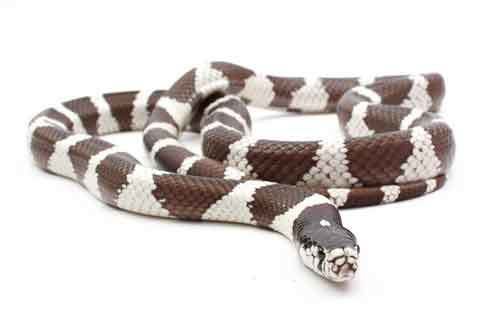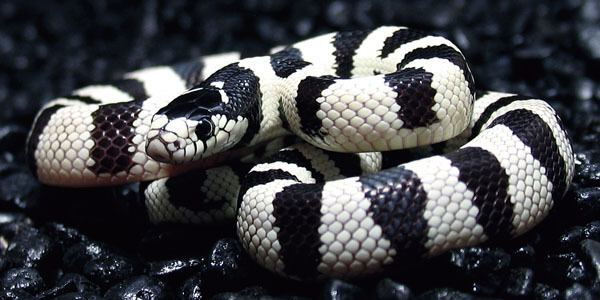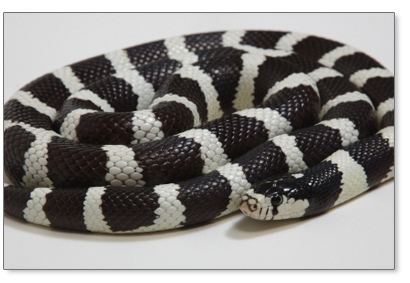Subphylum Vertebrata Suborder Serpentes Higher classification Lampropeltis getula | Phylum Chordata Rank Subspecies | |
 | ||
Scientific name Lampropeltis getula californiae Similar Kingsnakes, Snake, Lampropeltis getula, Reptile, Milk snake | ||
Baby california kingsnake info and basic setup
The California kingsnake (Lampropeltis getula californiae) is a nonvenomous colubrid snake endemic to the western United States and northern Mexico. It is a relatively small subspecies of the common kingsnake and is found in a variety of habitats. Due to ease of care and a wide range of color variations, the California kingsnake is one of the most popular snakes in captivity.
Contents
- Baby california kingsnake info and basic setup
- Range and habitat
- Behavior and diet
- Reproduction
- In captivity
- References

Range and habitat

The California kingsnake is widespread along the West Coast of North America to elevations of approximately 6,100 ft (1,900 m) in the Tehachapi Mountains and to over 7,000 ft (2,100 m) in the southeastern Sierra Nevada Mountains. This species lives in a wide variety of habitats, including woodland chaparral, grassland, deserts, marshes, and even suburban areas. These snakes live in Oregon, California, Nevada, Utah, Arizona, and Northwestern Mexico. In Arizona, they intergrade with the desert kingsnake and the Mexican black kingsnake. The species has also become invasive on the Spanish island of Gran Canaria.
Behavior and diet

The California kingsnake is primarily diurnal, but may become increasingly nocturnal during periods of particularly hot weather. In the winter, they retreat underground and enter a hibernation-like state called brumation. When disturbed, California kingsnakes will often coil their bodies to hide their heads, hiss, and rattle their tails, which can produce a sound somewhat resembling that of a rattlesnake. They are considered harmless to humans, but if handled it is common for this species to bite as well as excrete musk and fecal contents from their cloaca.
California kingsnakes are opportunistic feeders, and common food items include rodents, other reptiles, birds, and amphibians. All kingsnakes are non-venomous, but are powerful constrictors and generally kill their prey through suffocation. The "king" in their name refers to their propensity to hunt and consume other snakes, including venomous rattlesnakes that are commonly indigenous to their natural habitat. California kingsnakes are naturally resistant to the venom of rattlesnakes but are not totally immune.
Reproduction

The California King is an oviparous internal fertilization animal, meaning it lays eggs as opposed to giving live birth like some other snakes. Courtship for this kingsnake begins in the spring and involves the males competing for available females. Their mating ritual begins by the male snake vibrating uncontrollably. Eggs are laid between May and August which is generally 42–63 days after mating; in preparation the female will have chosen a suitable location. The typical clutch size is five to twelve eggs with an average of nine, though clutches of 20 or more eggs are known. The hatchlings usually emerge another 40–65 days later, and are approximately eight to thirteen inches in length. Adult California kingsnakes are most commonly 2.5–3.5 feet in length, and rarely exceed 4 feet.
In captivity
The California kingsnake is one of the most popular pet reptiles due to its ease of care, attractive appearance, and docile demeanor. Due to natural color and pattern variability between individual snakes, snake enthusiasts have selectively bred for a variety of color patterns and morphs. Dozens of color variations are sold in the pet trade. Wild type California kingsnakes are technically illegal to sell without special permits in their home state of California. These increased restrictions are due to a law that prohibits trafficking native California species within state lines. As captive bred morphs are generally exempt from these rules, the law is loosely enforced.
